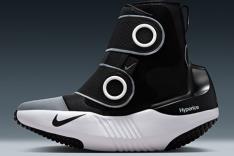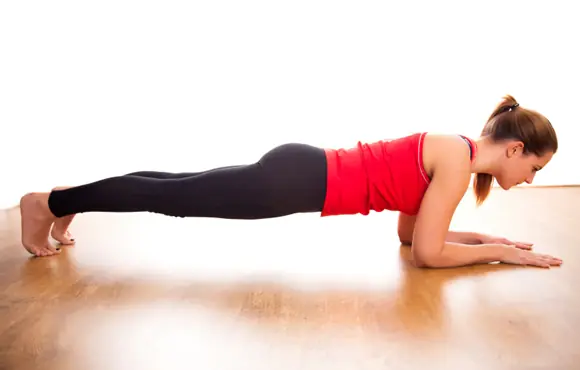3) Fit
If the Helmet Fits, Wear It
There's a guy I ride with who's helmet straps, while connected, always dangle well below his chin like a string of pearls. It takes every ounce of my (admittedly limited) self-control to not go full-out Mom on him and tighten those stupid straps. If your helmet doesn't fit right and isn't attached to you properly, you might as well be wearing an Easter bonnet. When shopping for a helmet, place it on your head and adjust the crank (or other adjustment doohickey) on the back until it is snug. With the straps undone, nod and shake your head like a bobble head. If the helmet slides and wobbles around, it's too big. If it stays put, it fits.
Next, you need to wear it properly. Remember the 2V1 rule: only two fingers between your eyebrows and the bottom of the helmet. The straps should form a nice, even "V" under your earlobes, and you should only be able to fit one finger under the chinstrap. Follow these rules and save the bonnet and pearls for the Easter parade.
Another thing you want to factor into the equation is any additional headgear you wear under your helmet. I learned this lesson the hard way when I bought a fabulous helmet that fit me perfectly, but only if I wasn't wearing anything else on my head. I discovered this when fall rolled around, and I donned my oh-so-stylish wool cycling cap under my helmet. After an hour or so of riding, my head felt like it was wedged snugly in a vice grip. Most helmets come with some amount of adjustability, but unless you like the feeling of your skull being gently crushed, account for cycling caps and winter gear as needed.
4) Safety
The Evolution of the Salad Bowl
It's hard to believe that as recently as the early 1970s, cycling helmets were made out of little more than padded strips of leather that offered about as much protection as a hairnet. According to veteran racers, the best you could hope for in a crash is that your ears might not be shredded clean off. Since then, breakthroughs in technology and increased safety standards have helped helmets evolve from flimsy leather harnesses to primitive foam salad bowls to the über-engineered versions we wear today. The market continually demands lighter, cooler and more aerodynamic options—a tricky thing to achieve without sacrificing structural integrity. Unfortunately, many of the changes made in the last 25 years to improve aerodynamics, style and ventilation have come at the expense of safety. For example, the elongated helmets introduced in the late 1990s that boasted ridges and rear peaks proved to catch and jerk the rider's head and neck in crashes. Since then, studies have shown that a smooth, rounded shape is safest in a crash, sliding and scrubbing energy from the impact.
MIPS is basically a built-in plastic roll cage that, on impact, lets the helmet slide relative to the head, adding more protection against concussions to the brain caused by angled impacts.
One of the latest innovations comes from a cooperative in Sweden, who developed a technology called MIPS (Multidirectional Impact Protection System). Introduced to the market around 2009, it is basically a built-in plastic roll cage that, on impact, lets the helmet slide relative to the head, adding more protection against concussions to the brain caused by angled impacts. The jury is still out when it comes to the effectiveness of this technology, but many helmet manufacturers now offer MIPS versions of their stock helmets at an additional cost equivalent to about three caramel macchiatos.
Even without all the new fancy tech, any safety certified helmet will do the trick, provided it fits and is worn correctly. If you crash, be sure to inspect the helmet for signs of structural damage. Even if you don't see anything, it's probably time to go shopping for a new one. Mmmmm. Shopping.
5) Style
Life's Too Short to Wear a Boring Helmet
Helmets—like their underappreciated neighbors to the far south, socks—are ever-changing with the fickle tides of fashion and technology. While it certainly is not necessary to embrace the latest trend at every turn, if you are still wearing that foam salad bowl from 1982, you might want to consider an upgrade.
Once you've factored in all the important (yet boring) stuff like fit, safety, function and cost, you finally get to the fun part of helmet shopping: style. I recently signed up for Zwift, the online training platform that has taken the indoor cycling world by storm. One key feature allows each rider to customize their on-screen avatar, offering options for everything from wheelsets to hairdos. Although I am a zealous helmet-wearer in real life, given the relatively low risk of harm to my real self, I happily allowed my on-screen self the freedom of riding sans casque.
Once I started Zwifting (hello, new verb) I found myself decidedly in the minority. "Why on earth is everyone wearing a helmet?" I wondered. The answer became clear: A helmet is part of our uniform. Although utilitarian in purpose, it is an accessory we use to express our style, brand loyalty, technical savvy, team or rider fandom or merely to match the rest of our carefully curated kit. So be yourself, and pick a helmet that makes you feel like a rockstar (minus the questionable morals and excessive lifestyle).
 Ready to ride? Search for a cycling event.
Ready to ride? Search for a cycling event.
- 2
- of
- 2








Discuss This Article